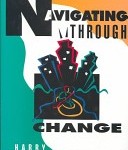Book Review – One Project Too Many for APM Project Magazine March 2013
Another book review by Nicola at The CV Righter appears in March’s edition of the APM Project Magazine – here is the full review:
Book Review
Book Title: One Project Too Many
Authors Name: Geoff Reiss & Geoff Leigh
Publisher: Project Manager Today Publications
List Price: £7.99
ISBN: 1-900391-12-0

Introduction to the Book
This book is split into two sections – the first covers a newly appointed CEO to a supermarket chain, it is written in a novel format as opposed to a text book and talks through the discovery of the business current project portfolio. It is quickly ascertained that there are a lot of project which have no control and even no budgetary monitoring. Some of the projects benefits counter attack each other which leads the CEO to bring in an outside source to speak with the board and gain some buy-in to make significant changes without stepping on too many toes.The story continues with the consultant being employed at the company as a more cost effective move and then the business managers begin a new learning curve. As the book progresses it talks through structuring programmes of work and how to effectively put together a project team and using methods derived from OGC. The second half of the book runs through what is called “Anna’s files” – these are various pieces of documentation used throughout the first section of the book and run into further detail about the need and function of them.
Overview of Book’s Structure
The book is structured into two sections and nine chapters – the chapters are the first section of the book and the last section is not chaptered.
Highlights
The book is written in a real life situation format which is a refreshing change from the usual text book clinical approach. Steering clear of the formal approach and combining the novel style with case studies lends to a more relaxed but easily more informative read – often faced with stuffy text I can start to bore of the repetitive and sometimes obvious, skipping sections just to be able to keep myself awake and actually drive something useful and unique. This book is engaging and amusing too, putting the methods into practice and actually demonstrating how it can or might not work really helps the reader get a grasp of the realities of managing projects rather than pure theory.I particularly like the part where it is suggested that some projects should be closed – the response being that they have already poured money into them, but it is quickly established that the benefits would no longer be realised. Something which a great deal of organisations and project managers need to embrace – the emphasis, quite rightly was refocused on what they hope to achieve rather than just carrying on for the sake of it. The second section which addresses the files introduced throughout the process such as structuring and PIDs etc gives a deeper insight into why they are required and again because they are referring to the scenario in the first section they are easy to understand and contextualise.
Shortfalls
There wasn’t a great deal missing at all – in fact it reads really clearly and as such is difficult to put down; however some of the additional text which makes the book more novel like did begin to get a little boring and could have been reduced as the book progressed.
Who might benefit from the Book
Everyone will benefit from this book, whether you think you don’t need to know anymore about how to manage projects (this is covered in the book) to the beginner who may find the PM terminology a little hard to grasp initially as the book really gets to the roots of what, why, where, how.
Conclusion
This book appears to be aimed at those new to project management – however once you read it you may recognise some behaviours from your own business in there, especially as they originally thought they were doing really well. They were making money so what was the problem? It quickly transpired that the business was losing a lot of money on projects, but addressed this in a step by step manner – something all businesses could learn from. Therefore I believe it is relevant to all levels of experience and is certainly a step away from all the other books out there.If you have a list of books to read, this should be on it. It is something which can be read on the tube and is certainly one I would recommend for reference libraries in the office. Taking a fresh approach to a case study and giving that extra background really adds to reinforcing the need for structure in programmes and projects, even the very experienced will learn something, especially on the softer skills side of things.






